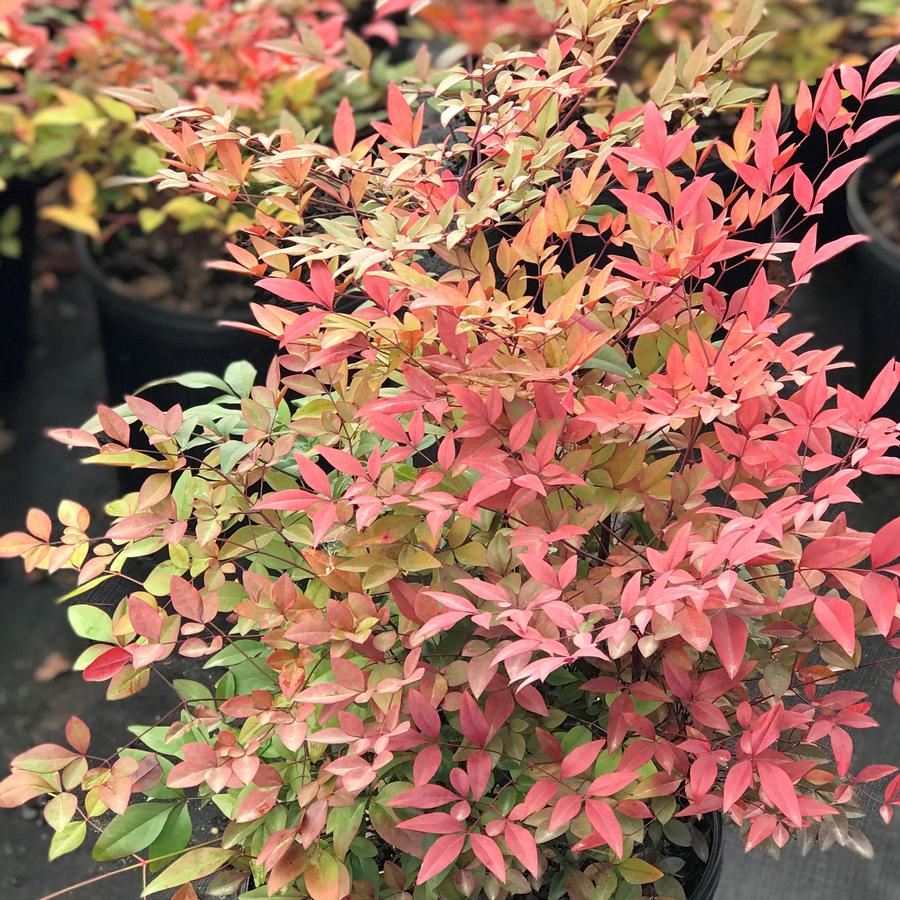

Nandina domestica (Heavenly Bamboo) is a small, evergreen, or semi-evergreen shrub adding multi-season interest to the garden. In spring, a profusion of tiny, white flowers adorned with golden anthers appear in long arching panicles at the tips of the branches. Rich in nectar, they attract bees and other pollinators. The flowers are followed by abundant clusters of green berries which ripen to bright red and persist throughout fall and winter. Ornamental, they are held against the lacy foliage which emerges purple, matures to soft green, and turns purple to reddish-purple in fall. Popular in the landscape, Heavenly Bamboo is one of the toughest and most adaptable plants, its berry-laden branches providing a pleasing vertical accent.
| Requirement | |
|---|---|
| Hardiness | 6,7,8,9 |
| Heat Zones | 4,5,6,7,8,9,10,11,12 |
| Climate Zones | 4, 5, 6, 7, 8, 9, 10, 11, 12, 13, 14, 15, 16, 17, 18, 19, 20, 21, 22, 23, 24 |
| Plant Type | Shrubs |
| Plant Family | Berberidaceae |
| Exposure | Full Sun, Partial Sun |
| Season of Interest | Spring, Summer, Fall, Winter, Late Spring, Early Summer, Mid Summer, Late Summer |
| Height | 2' - 3', 4' - 5', 5' - 6' |
| Spread | 2' - 3' |
| Water Needs | Average |
| Maintenance | Low |
| Soil Type | Chalk, Clay, Loam, Sand |
| Characteristics | Showy, Evergreen, Fruit & Berries, Drought Tolerant |
| Garden Styles | City and Courtyard, Gravel and Rock Garden, Informal and Cottage, Traditional Garden |
| Planting Place | Beds and Borders, Hedges and Screens |